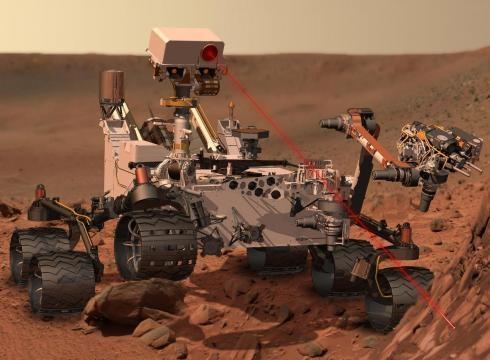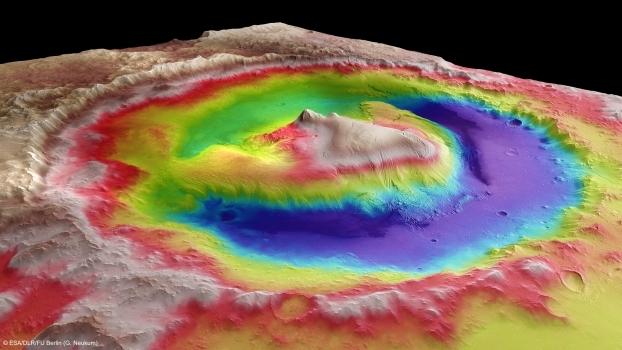Chemcam: 500,000th laser shot from the Curiosity rover
Far exceeding the duration of its mission, initially planned for two years, the Curiosity rover, equipped with the two instruments SAM and ChemCam designed with the participation of France, has enabled, in five years of uninterrupted operation, to discover ancient rivers, a delta that filled a lake whose water had a neutral PH and a temperature of over 30°C. While drilling at the bottom of this ancient lake, he detected mineral veins that testify to prolonged underground water activity and catalogued sediment sources, thus identifying all the characteristics of a habitable planet. Curiosity then began climbing Mount Sharp to reach layers of clay. By planning to study this material, it will be possible to determine how long the water was able to remain on Mars, under what conditions, and thus, little by little, to write the history of Mars.

At the origin of these extraordinary advances: the ChemCam laser camera developed with the participation of IRAP, CNRS, the University Toulouse III Paul Sabatier and CNES. Camped at the top of the Curiosity rover mast, it enables the engineers of the FIMOC (French Instruments Mars Operations Centre) to monitor and program the instruments as well as retrieve and process scientific data. Every day, following coordination with 120 scientists from around the world, geologists, biologists, mineralogists and atmospheric specialists, French experts point out the Red Planet, alternating with those from Los Alamos National Laboratory.
On Wednesday 20 September, they made their 500,000th shot. Crossing this symbolic milestone represents a significant step in this unprecedented technological and scientific adventure with what it entails in terms of results: 15,000 measurement points were obtained, more than 10,000 images were collected resulting in more than 50 scientific publications, constituting an unprecedented library of soil composition on Mars. Built by Thales Optronics, under contract to CNES, the ChemCam laser is the most powerful laser operating on the surface of an extraterrestrial planet. The pulse of infrared light lasts only a few billionths of a second, but it is intense enough to vaporize matter at over 8,000°C. Once activities are scheduled for the next day, ChemCam’s commands from the FIMOC are transmitted to NASA’s Jet Propulsion Laboratory, which sends them to Mars.

IRAP Contacts
- Sylvestre Maurice, IRAP, sylvestre.maurice@irap.omp.eu
- Olivier Gasnault, IRAP, olivier.gasnault@irap.omp.eu






